Electric Van Wraps Best Practices & Key Considerations
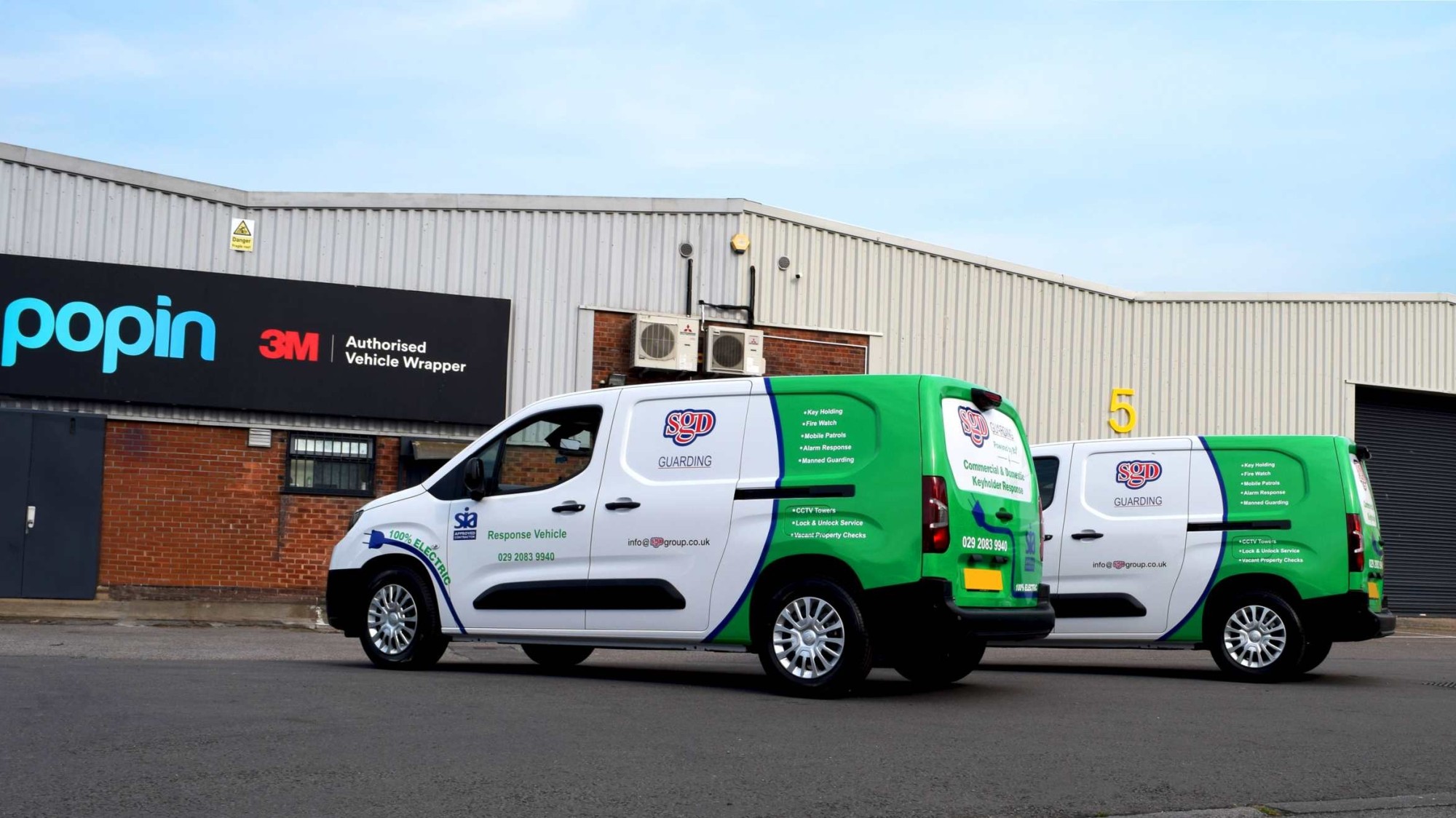
posted 15th October 2025
Electric vans are no longer a futuristic idea - they’re already on Britain’s roads in growing numbers. Businesses of all sizes are switching from traditional diesel or petrol vans to electric vehicles (EVs), not only for sustainability reasons but also to reduce running costs and meet evolving environmental regulations.
This rapid shift creates an enormous opportunity for smart EV fleet branding. A professionally installed electric van wrap is one of the most cost-effective ways to transform an EV into a mobile billboard that advertises your business around the clock.
But wrapping an electric vehicle isn’t exactly the same as wrapping a conventional van. There are some unique factors to consider - both from a technical perspective and a strategic one.
In this guide, we’ll walk you through best practices and key considerations for wrapping electric vans and EV fleets, so your branding looks flawless and lasts for years to come.
Vehicle Wraps & Graphics for EV Vehicles
There’s a reason why more and more companies are turning to EV wraps for their branding:
Sustainability Messaging
If you’ve invested in an electric van fleet, your commitment to the environment is a powerful selling point that your wrap can amplify.
Modern Styling
Electric vans feature clean, minimal body shapes that are ideal for vinyl wraps and sleek branding applications.
High Visibility
EVs are often used in busy urban areas, offering your brand daily exposure to thousands of potential customers.
Cost-Effective Advertising
A well-designed wrap transforms every van into a 24/7 mobile billboard, giving exceptional long-term marketing value.
❓ Did you know? In 2024, around 41% (340,000) of company cars in the UK were fully electric and this figure is going to continue growing year-on-year.
Understanding EV Body Shapes and Panels
Most modern electric vans feature slightly different body lines to their diesel counterparts. This is because the battery packs and drivetrain are positioned differently, and designers aim for more aerodynamic shapes to improve efficiency.
This can mean:
- More pronounced curves on sills and front bumpers
- Flush door handles and minimal seams
- Unique charging port areas and rear quarter panels
👉 This matters because vinyl behaves differently over curves and indents. A skilled wrap installer will use the right material, temperature and stretching techniques to achieve smooth, seamless coverage without lifting or tension issues.
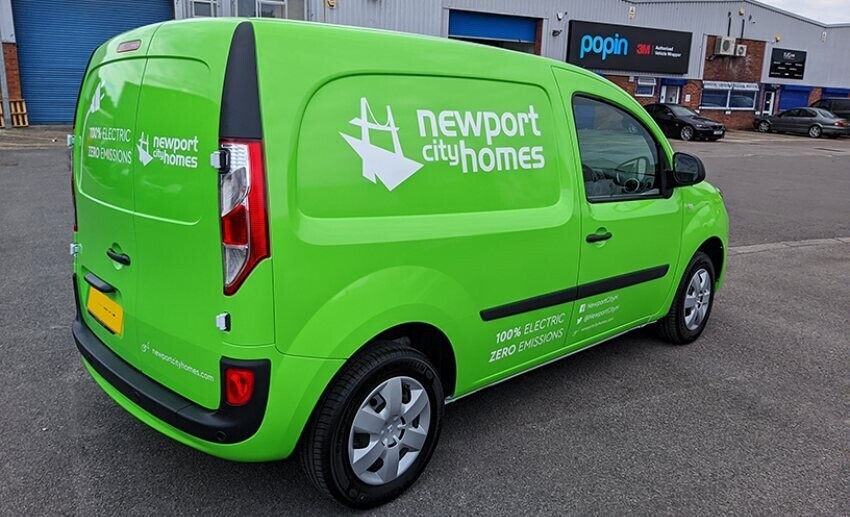
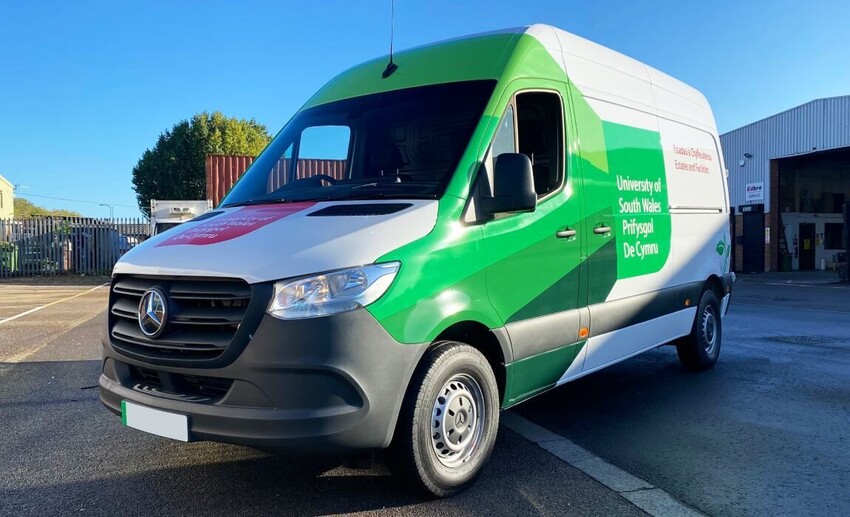
Charging Ports and Functional Access Points
One of the biggest differences between electric vans and conventional ones is the charging port.
When designing and installing vehicle liveries, it’s essential to account for:
- Accessibility - making sure the port isn’t obstructed
- Branding continuity - ensuring logos or design elements don’t get cut awkwardly
- Weather sealing - making sure vinyl edges are properly sealed around the port to avoid lifting
Battery Heat Management and Wrapping Considerations
Electric vans rely on efficient thermal management to keep their battery systems performing well.
While wrapping doesn’t interfere with this when done correctly, there are a few key best practices to follow:
- Avoid applying vinyl directly over heat vents or airflow channels.
- Use high-quality wrap films that won’t bubble or warp under heat.
- Maintain proper installation temperatures in a controlled environment.
- Allow extra clearance around battery service access points.
- Choose films with excellent heat resistance to prevent premature lifting or shrinkage.
- Avoid obstructing manufacturer safety labels, warning stickers, or cooling intakes.
- Schedule periodic inspections of wrapped areas near thermal zones.
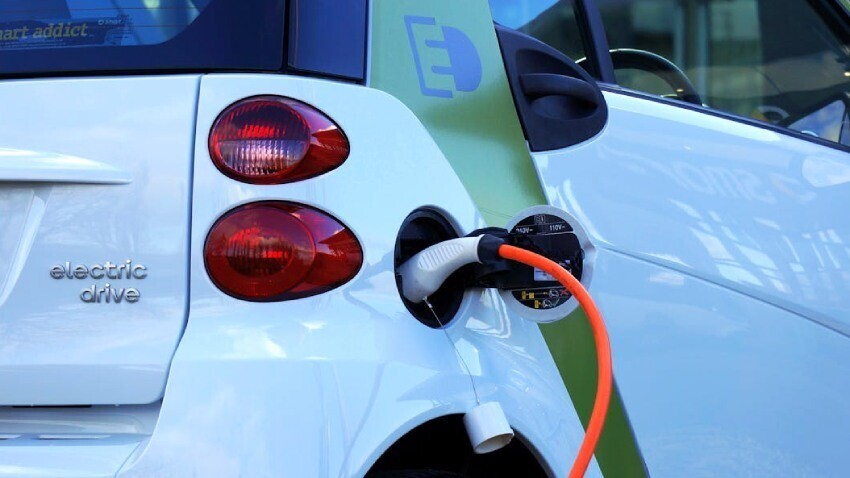
Design Strategies That Work Best for Electric Vans
Electric vans already communicate a modern, progressive image.
A good wrap design should build on that rather than fight it.
Here are some smart design strategies:
- Clean, minimal designs that echo the vehicle’s sleek lines.
- Sustainability messaging like “100% Electric” or “Zero Emissions” to reinforce your environmental credentials.
- Bold contrasting colours to maximise visibility in urban traffic.
- Strategic panel placement to align logos and text with body contours.
✅ We've got you covered: Our skilled design team can you help you separate your EV fleet from the competition - we can begin discussing creative ideas during our design and consultation meet up.
Do
- ✅ Emphasise sustainability messaging
- ✅ Keep designs clean and bold
- ✅ Work with natural body lines
- ✅ Use contrasting colours for visibility
Don’t
- ❌ Cover vents or charging points
- ❌ Overload panels with tiny text
- ❌ Stretch vinyl excessively over curves
- ❌ Forget about night-time visibility
Need more inspiration? Check out: Minimum Text, Maximum Impact for Van Wrap Design
Weight and Surface Considerations
Although vinyl wraps are extremely lightweight, every component matters on an EV. Excess unnecessary layering can technically reduce range (albeit minimally), but the bigger consideration is panel adhesion.
Many electric vans use lightweight composite panels rather than traditional metal. These sometimes require different surface preparation to ensure vinyl bonds properly and remains stable over time.
👉 It’s critical to clean and prepare EV body panels meticulously to remove factory coatings, protective waxes, or static build-up.
EV Branding and Environmental Messaging
One of the biggest advantages of running an electric van fleet is public perception.
Consumers and clients increasingly favour companies with a visible commitment to sustainability.
A well-executed wrap can amplify this message brilliantly.
Examples of impactful messaging:
- “100% Electric Fleet”
- “Zero Emissions on Every Delivery”
- “Powered by Clean Energy”
- “Driving Change for a Greener Future”
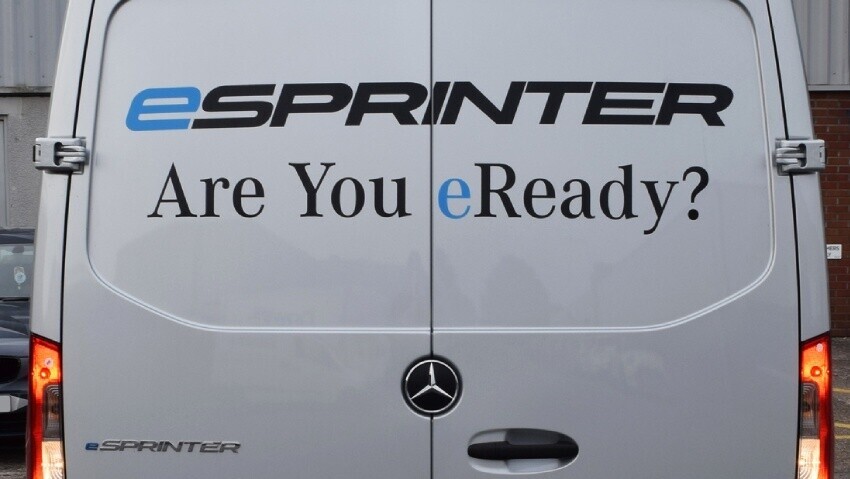
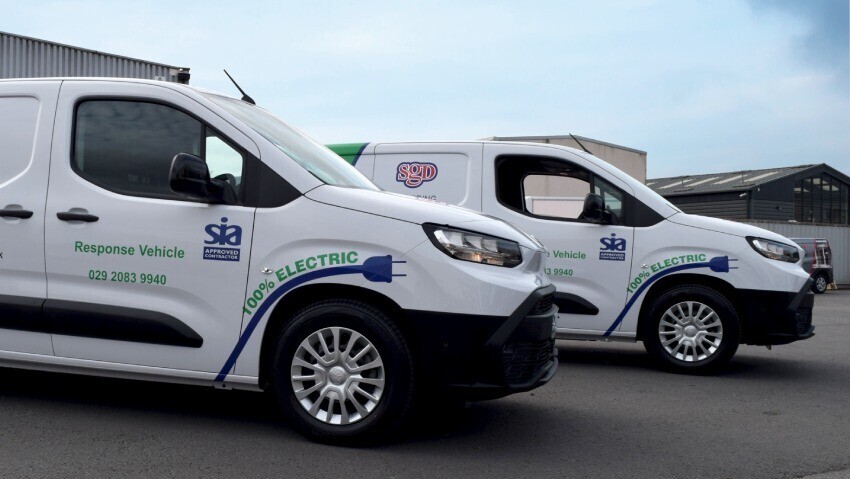
This messaging can be paired with green or eco-inspired design cues - but it doesn’t have to be cliché.
Modern EV wraps often use bold, modern colour palettes rather than stereotypical “eco green” - so your choice of colours remains vast!
Night-time Visibility and Safety Graphics
Many electric vans are used for urban delivery work, often operating at night or early in the morning.
Consider incorporating:
- Reflective vinyl sections or accents
- Chapter 8 compliant markings for roadside fleets
- Contrasting striping to improve visibility in low light
- High-intensity reflective chevrons on rear panels
- Strategic placement of reflective elements on doors/bumpers
- Fluorescent vinyl options for added daytime and dusk visibility
- Edge highlighting on key contours to make EV shapes stand out
- Reflective fleet logos and contact details
This is not just good practice for safety - it can also ensure your branding is visible and effective around the clock.
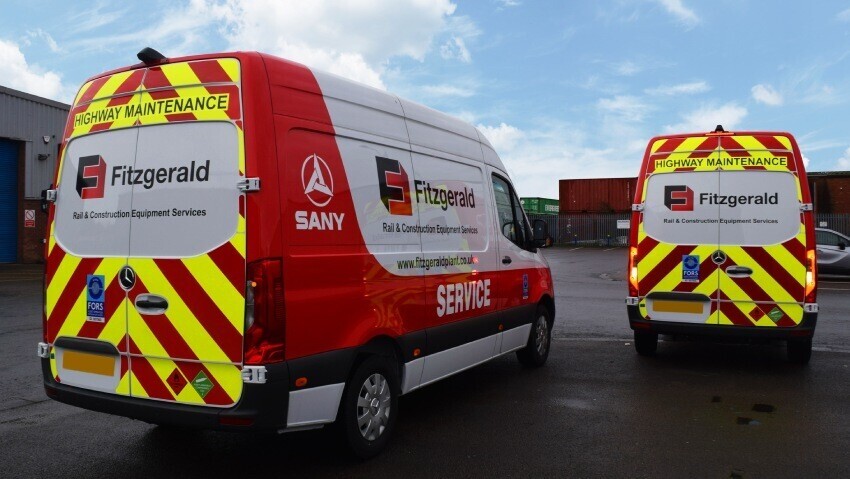
Installation Conditions Matter Even More for EVs
Wrapping electric vans requires a temperature-controlled environment.
Because many EVs have smoother body panels with fewer seams, achieving flawless adhesion requires:
- Precise temperature control (ideally 20–25°C)
- Clean, dust-free working conditions
- Proper curing time before returning the van to the road
This is why most quality EV wraps should be installed in a dedicated wrap centre, not outdoors or in uncontrolled environments.
A clean finish means better durability - and your branding will keep looking sharp for years.
Long-Term Maintenance and Care
Electric vehicles may need less mechanical maintenance, but wrap aftercare remains essential and follows the same principles as any other non-electric vehicle livery and/or graphics.
Best practices include:
- Regular hand washing with gentle detergents
- Avoiding pressure washers and harsh chemicals
- Checking for edge lifting or damage near charging points
- Keeping an eye on reflective or high-impact areas
These steps ensure your wrap not only looks great but also lasts its full expected lifespan.

Durability and Return on Investment
A quality wrap on an electric van typically lasts at least five to seven years with correct aftercare. When you factor in the advertising exposure versus the cost, it’s one of the best long-term investments your business can make.
Unlike digital ads, a van wrap works non-stop - wherever your fleet drives or parks.
Wrapping EV Fleets vs. Individual Vans
Wrapping a single van is one thing. Wrapping an entire EV fleet is another - and it requires careful planning to maintain consistent branding.
Key steps for successful EV fleet wraps:
- Standardise design templates across all models.
- Allow for variation in charging port placement.
- Plan scheduling to minimise fleet downtime.
- Use premium materials for long-term durability.
This ensures every van looks consistent, reinforcing your brand identity wherever your fleet travels.
| Category | Best Practice | Key Consideration |
|---|---|---|
| Design | Clean, bold visuals that clearly communicate sustainability messaging. | Ensure the graphics complement aerodynamic EV body lines. |
| Charging Ports | Keep access clear and well-finished with precision trimming. | Plan layout carefully to avoid awkward logo placement or wrap seams. |
| Materials | Choose high-performance wrap films for longevity and durability. | Ensure materials can withstand heat fluctuations and complex contours. |
| Installation | Carry out wrapping in a temperature-controlled environment. | Guarantees flawless adhesion and a premium finish that lasts. |
| Maintenance | Regular gentle hand washing and visual inspections. | Helps maximise wrap lifespan and keeps branding vibrant. |
Wrapping Things Up
Electric vans represent the future of commercial fleets in the UK. And with that future comes new opportunities for smart, sustainable branding through wraps and graphics.
By taking into account EV-specific factors like charging port access, aerodynamic design, material performance, and installation conditions, your business can achieve a stunning, long-lasting finish that amplifies your brand presence every time your van hits the road.
A well-wrapped EV fleet isn’t just an investment in marketing - it’s a powerful statement about your commitment to the future.


